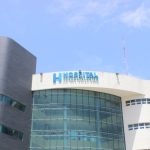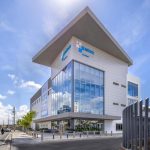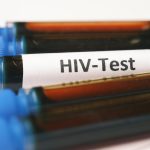Authorities showcase regional growth, tourism expansion at Cabo Rojo second phase opening
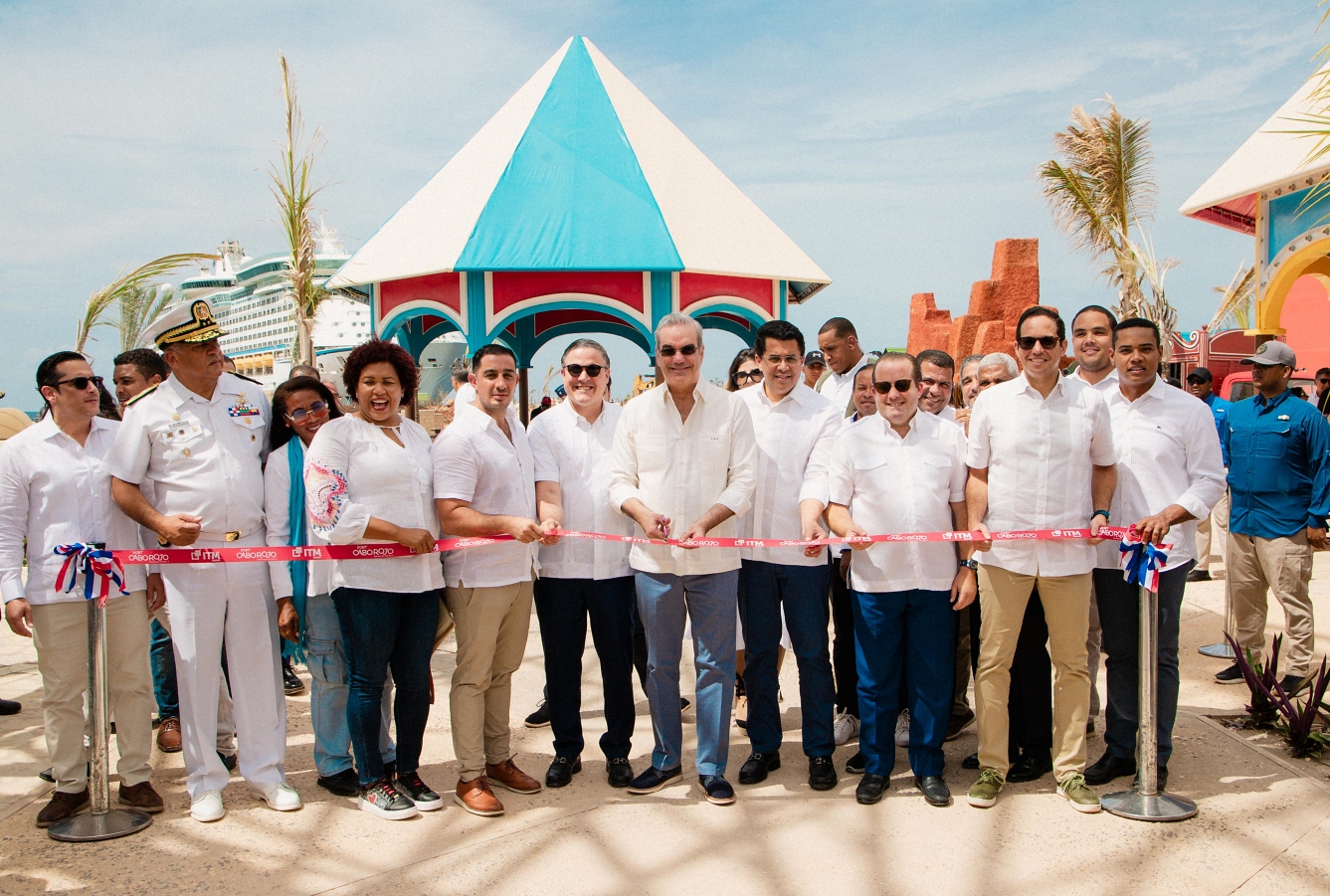
President Luis Abinader, Tourism Minister David Collado, and other officials during the ribbon-cutting ceremony for the inauguration of the second phase of Cabo Rojo Port. (Photo: Division of Communications, MITUR)
Pedernales, DR.- In a landmark event, President Luis Abinader, alongside Tourism Minister David Collado, inaugurated the second phase of Port Cabo Rojo, solidifying the southern region’s place as a burgeoning hub for cruise tourism in the Caribbean. This expansion marks a significant milestone in the ongoing development of Pedernales, a region that has seen a transformative boost through strategic tourism investments under Abinader’s administration.
The event, held on Wednesday, welcomed the arrival of the third cruise ship to dock at the newly expanded port — Adventure of the Seas — bringing 3,114 passengers and 1,185 crew members. This occasion showcased the potential of Cabo Rojo to accommodate large-scale tourism, with the expanded port now capable of handling two Oasis-class ships and up to 15,000 passengers at a time.
Economic and employment impact
President Abinader highlighted the importance of tourism for the regional economy, emphasizing the administration’s ongoing commitment to fostering sustainable development in the South. He noted that the port has created 400 direct jobs, and for each direct job, there are an estimated two to three indirect jobs throughout the area. “This is an important economic impact, and it will change the lives of hundreds of thousands of Dominicans, especially in the southern region,” Abinader stated.
Minister Collado echoed these sentiments, adding, “The arrival of thousands of visitors represents an invaluable opportunity for local communities, fostering economic development and promoting our natural beauty.”
The project, which has garnered investment from both the public and private sectors, is set to generate an estimated economic impact of $120 to $150 million annually. It is part of a broader strategy to diversify the Dominican Republic’s tourism offerings beyond its traditional northern and eastern hotspots, such as Punta Cana.
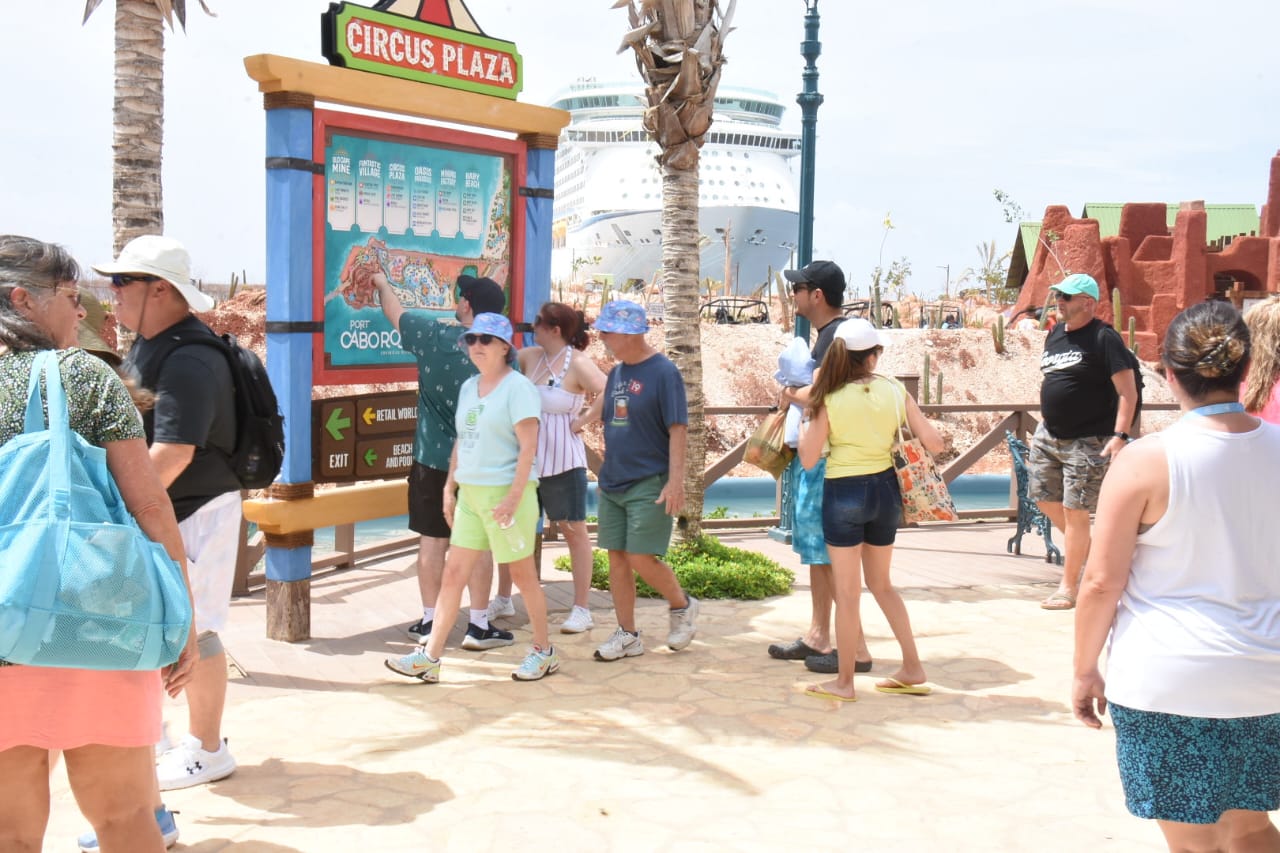
A distant view of the cruise ship docked at Cabo Rojo Port, marking the arrival of international visitors to the newly inaugurated second phase. (Photo: Division of Communications, MITUR)
Jean Luis Rodríguez, Executive Director of the Dominican Port Authority (APORDOM), emphasized that the project has positioned Pedernales as a gateway for Caribbean cruises, effectively transforming the South into a competitive and sustainable tourism destination. “Port Cabo Rojo allows us to positively impact the South of the country, especially Pedernales, and demonstrates that we are becoming the cruise hub of the Caribbean,” Rodríguez said.
Sustainable development and local involvement
Port Cabo Rojo is more than just a cruise terminal; it’s a symbol of sustainable tourism. Built to the highest quality standards, the port is free from single-use plastics, and prioritizes the protection of nearby protected areas and natural parks. The terminal’s design, guided by environmental sustainability, reflects a commitment to preserving the region’s unique ecosystems while boosting local economic development.
The port’s infrastructure, complemented by advanced stages of construction on surrounding hotels, roads, and other amenities, aims to provide a seamless and eco-friendly experience for tourists. Sigmund Freund, Executive Director of the Pro-Pedernales Trust, noted that these projects exemplify the government’s coherent and strategic vision. “The works being carried out here are a testament to the administration’s commitment to leaving a legacy of world-class tourism for the entire region,” said Freund.
One of the key elements of Cabo Rojo’s success is its ability to integrate local culture into the tourist experience. Upon arrival, passengers were greeted with vibrant live music at the “Plaza Expedición Bar,” traditional carnival performers, and folk entertainment at the “Oasis” stage. Additionally, tourists had the opportunity to explore local crafts, including the region’s iconic larimar stone, at the municipal park, where artisans showcased their work.
Minister of Public Administration, Sigmund Freund, reiterated the importance of engaging local communities, “This project doesn’t just bring in visitors; it provides a platform for local artisans, musicians, and entrepreneurs to share their culture and skills with the world.”
Future prospects and vision
The successful launch of this second phase signals a bright future for Cabo Rojo and the South of the Dominican Republic. Mauricio Hamui, CEO of ITM Group, underscored the port’s role in regional development, projecting that Cabo Rojo could welcome up to one million cruise passengers annually in the coming years. “This second phase represents a tangible achievement for the development of the southern region, bringing jobs and tourism that will benefit everyone in the Enriquillo area,” Hamui said.

The inauguration of the second phase of Port Cabo Rojo underscores a vision of inclusive growth, where local culture, environment and economy coexist harmoniously, ensuring that the benefits of tourism are felt far beyond the port’s gates. (Photo: provided by Mitur.gob.do)
With further expansions planned, including a thematic fair, water park, and various dining and retail options, Cabo Rojo is set to become a premier destination, blending leisure, culture and sustainability. The initiative not only drives tourism but also fosters a broader movement toward regional economic revitalization, aiming to uplift local communities and create lasting economic benefits.
The inauguration of the second phase of Port Cabo Rojo marks a pivotal moment for the Dominican Republic’s efforts to diversify and expand its tourism sector. By marrying sustainable practices with large-scale tourism infrastructure, the government is setting a precedent for regional development. The project underscores a vision of inclusive growth, where local culture, environment and economy coexist harmoniously, ensuring that the benefits of tourism are felt far beyond the port’s gates.
As Pedernales continues to grow as a cruise destination, the collaborative efforts between government entities and private partners demonstrate a successful model for tourism-led regional development. With the current administration’s leadership, the South of the Dominican Republic is poised to become a shining example of how strategic investment in tourism can lead to sustainable and inclusive economic growth.




